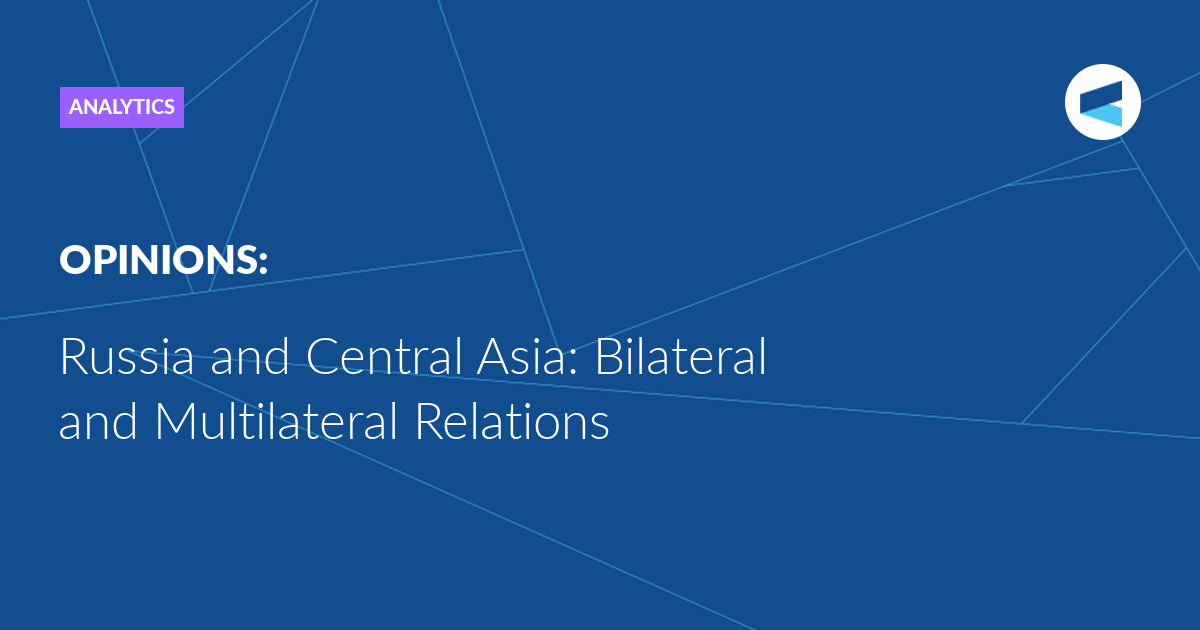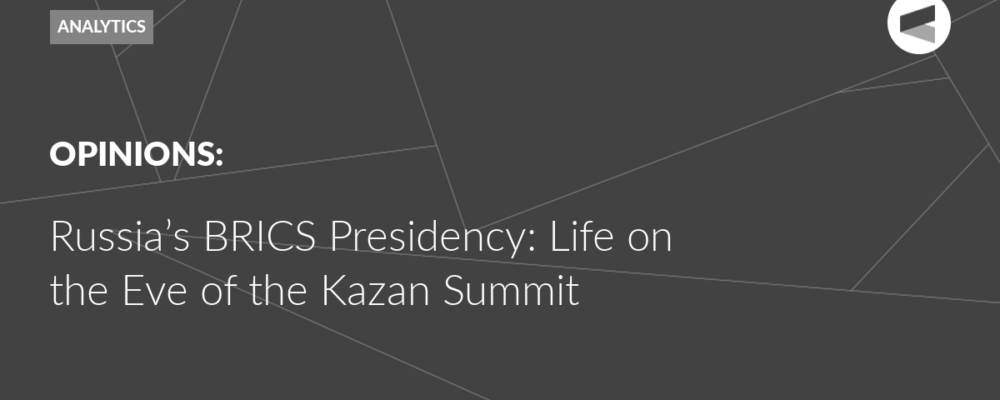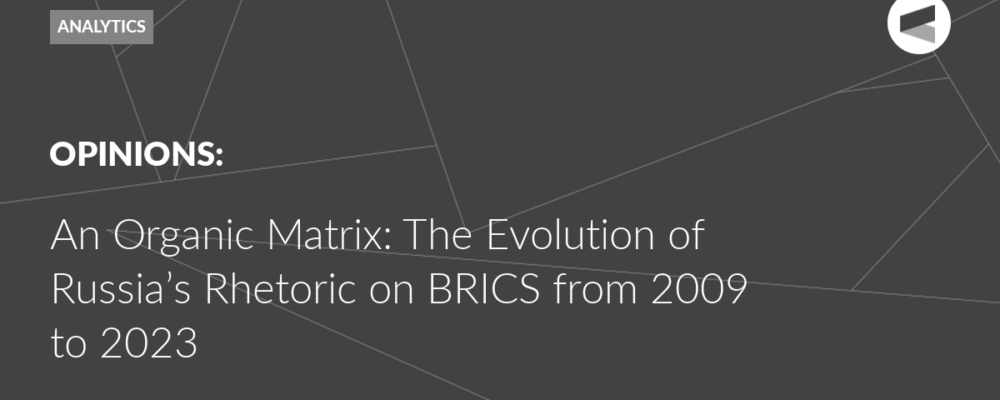Since the previous Central Asian conference in Tomsk, there have been significant changes in the system of bilateral and multilateral relations in the region. These changes have been prompted by various factors, including internal developments within the five countries, as well as the actions of external actors nearby, such as Russia, China, and Iran, as well as those of states that see Central Asia as a strategic region rather than a daily concern, such as the United States, the European Union, India, and Japan, writes Stanislav Tkachenko, Professor of the Department of European Studies at the St. Petersburg State University, for the 4th Central Asian conference of the Valdai Discussion Club.
The alarming expectations in Russia in the spring of 2023, which were associated with the potential strengthening of Western sanctions and Kiev’s preparations for a counter-offensive in the Zaporozhye and Kherson regions, have not materialised. The Armed Forces of Ukraine, despite being equipped and trained by NATO countries, have lost a significant portion of their offensive capabilities in the battles that took place in the Azov steppes during the summer and fall of 2023. As a result, the ongoing armed conflict in Ukraine has taken on a more static nature, with the Russian Armed Forces increasingly gaining the upper hand.
A year ago, in May 2023, the Special Military Operation (SMO) had a limiting effect on the initiative and resources of the Russian Federation in the Central Asia region. Now, this deterring effect of the SMO has largely diminished. Russian diplomacy has resumed its activities in the region with a renewed focus on traditional priorities, including integration projects in the economic field, the development of transportation and logistics routes, counter-terrorism efforts, and assistance for development. Although issues related to the SMO, such as the threat of secondary sanctions against companies from the region that are interested in organizing parallel imports, may have a minor negative impact on some aspects of Russian business, these issues do not significantly impede cooperation between Moscow and the five countries of the region.
Since the end of the last century, the Russian Federation has been trying to put into practice in Central Asia the integration models borrowed from the European Union. Over the past years, some of these models have been quite successfully applied: a free trade zone, a customs union, a single market for goods, services, capital and labour, and a common transport policy. But it is important to emphasise that only in relation to two states in the region (Kazakhstan and Kyrgyzstan) were these initiative implemented in parallel by the Russian Federation. The remaining three countries (Uzbekistan, Tajikistan and Turkmenistan) have more than once demonstrated a desire to avoid Russian-promoted joint-projects with the other two. There is now little doubt that the one-size-fits-all integration policy is no longer working in the region, and is unlikely to be implemented in the future.
Experts on Asian affairs, when examining bilateral relations between China and Japan, have noted the unique approach of these two major Asian states from a political-economic perspective towards issues of interstate economic collaboration and security. It is now customary to describe the turn of the century Asian model of interstate relationships as a “hot economy and cold politics” dynamic, meaning that Asian nations do not perceive anything wrong with economic engagement, particularly if it involves private business entities. At the same time, matters of state sovereignty continue to be of the utmost importance to them, and any attempts by external actors to encroach upon them are met with resistance. These two opposing approaches coexist and rarely intersect.
Today, the “hot economy, cold politics” strategy is being increasingly used by the countries of Central Asia, both in their relations with each other and with neighbouring and distant countries. In the future, it is likely to become crucial for the Russian Federation. The “European model” is based on the priority of individual rights over collective rights, the protection of minorities as well as majority groups, and international integration, including the merger of sovereignties and the establishment of supranational governance structures. Russia has been disappointed with the European model, and is now seeking and implementing other values and institutions in its domestic and foreign policy.
It appears to us that the European model has never been closely aligned with the elite and mainstream groups of society in the Central Asian countries. The region’s integration owes not only to the active efforts of EU institutions, but also to Russia’s post-Soviet conviction that larger actors, primarily in the form of regional integration organisations, should replace sovereign states.
The escalation of the conflict between Russia and the Western bloc in 2014 marked the end of the “Euro-optimist” period in Russian history. This turn has had an impact on the five countries in the region. Today, the pragmatic economic cooperation between Central Asian states combines with a cautious approach to sovereignty and security, which is achieved not through traditional European membership in military alliances, but through participation in amorphous “international forums”, bilateral agreements, and individual partnerships.
Now, with the active participation of Russia, work is underway to build a new model of regional security in the central part of Eurasia. At the top level, security issues are to be discussed at the Conference on Interaction and Confidence Building Measures in Asia (CICA), an international forum which brings together 28 Eurasian countries. The CICA focuses on strengthening relationships and cooperation between Eurasian states in order to ensure stability and security in the region. Now the forum is going through a slow and difficult period, a political and diplomatic transformation into an intergovernmental organisation. Taking into account the Asian (Eurasian) specifics, there is no danger yet that the CICA will follow the path of the OSCE and, instead of security issues, engage in non-core activities. For example, the interference in the internal affairs of member states through elections monitoring and the practice of “exporting democratic institutions,” as is the case in the OSCE within the framework of the OSCE PA and ODIHR.
At a lower institutional level, security in Eurasia, primarily in Central Asia, can be ensured through bilateral agreements between its states, as well as with external actors. Over the past year, several such agreements have been concluded between Central Asian states, forming new components of the region’s security architecture. Let me cite a few recent examples.
On April 19, 2023, the presidents of Uzbekistan and Tajikistan concluded the Treaty on All-Encompassing Relations.
Also on that same day, Kazakh President Kassym-Jomart Tokayev and Kyrgyz President Sadyr Japarov concluded an agreement on further deepening and broadening allied ties between their countries.
In the recent past, the Kyrgyz Republic has proposed signing a similar agreement with Uzbekistan, and there is hope that an agreement on this matter will be reached shortly. Relations between Kyrgyzstan and Tajikistan, however, face significantly more challenges and contentious issues. We have recently seen an example in the transfer of Kyrgyz exclave Barak to Uzbekistan and the peaceful relocation of its residents to a new settlement nearby, on Kyrgyz soil. The cooperation between Tashkent and Bishkek offers a positive example of how even the most pressing political issues can be resolved through territorial delimitation and the recognition of new boundaries by all parties.
Let us propose that Russia, in this process, could play the role of mediator in negotiations and guarantor for the implementation of any agreements reached. It has a network of embassies and consulates in Central Asia and is also a member state of the Collective Security Treaty Organisation (CSTO), having proven its ability and willingness to carry out such tasks during the recent unrest in Kazakhstan in January 2022.
Today, membership in established, multilateral intergovernmental organisations is not the only option for regional powers. A review of the agreements signed by Uzbekistan with Russia and other countries reveals that, in practice, the level of engagement between Tashkent and its partners is not significantly different from the current stage of integration within the Eurasian Economic Union (EAEU) in terms of ensuring freedom of movement for goods, services, capital, and people, as well as the implementation of complex infrastructure projects such as the regular “AgroExpress” train service that operates along the Russia-Uzbekistan-Russia corridor. There are indications that Tajikistan may pursue a similar course in its political and economic development by expanding its cooperation outside the EAEU integration framework.
Not all Central Asian countries have passed the test of sovereignty during the military operation in Ukraine, much to the disappointment of Moscow. Over the past two years, some of these countries have succumbed to pressure and blackmail by the US and the EU, effectively becoming a front in the West’s sanctions war against Russia. First and foremost, we are talking about financial sanctions, a ban on the use of Russian MIR payment cards, and the refusal to process bank transfers to Russian entities from abroad. It remains to be seen what conclusions the Kremlin and Russian Ministry of Foreign Affairs will draw from these events. However, such unfriendly actions towards Russia should not go unanswered.
The core of the emerging multipolar world, which Russia is currently shaping in collaboration with China, India, Iran, and a number of other countries, consists of truly sovereign nations. These countries will rightfully determine the rules and standards of conduct for states in a post-hegemonic environment. The central focus of discussion regarding the new world order lies within the BRICS+ forum. It is now the time to initiate a dialogue regarding the criteria for joining this forum and, potentially, the two types of participation in BRICS. The first group would incorporate the largest nations of the Global Majority, for whom BRICS would serve as the focal point for managing the new postcolonial world order, excluding the United States, NATO, and their satellite states in Asia (Japan, South Korea, and Australia). The second category would include several dozen countries for whom membership in BRICS represents confirmation of their “multi-directional” foreign policy. The criteria for inclusion of such countries in BRICS+ might be purely procedural. At their expense, the forum could potentially expand to several dozen of states. However, these de facto “semi-sovereign entities” will not receive any special rights to make decisions within the BRICS framework or to determine the structure of the new international order or the rules for safeguarding their national interests. Instead, they will participate in cooperation (and possibly mediation in the event of conflicts) under the leadership of the major civilisational states.
Russia could potentially serve as such a leader for the Central Asian countries. In June 2023, the presidents of Kazakhstan and Uzbekistan participated in the high-level dialogue on global development in the BRICS plus format and expressed support for their countries’ membership in this forum. It is now time to determine the most appropriate format for Central Asian participation in BRICS+. This is a critical task for political and diplomatic leaders in these countries.
In the early months following the commencement of the SMO, there was a reduction in the interest of Russian authorities and businesses in promoting national business interests in the Central Asia region. This interest has since been revived, in part due to the establishment of hundreds of Russian representative offices or the complete transfer of operations from Russia to Central Asian states by Russian companies. The first to follow this path were major foreign companies interested in the Russian market but unable to operate under sanctions, such as Honeywell, TikTok, Indriver, and Alstom. Uzbekistan and Kazakhstan have emerged as hubs for Russian IT expatriates, with Russian programmers helping to establish entire sectors of the information technology industry in those countries. Russia has now entered the competition for the loyalty of expatriates and a significant number of them have already returned home.
However, it is essential for the national economy that professionals who have not yet returned to their country continue to be part of its economic landscape and contribute to preserving and developing unique skills that are in high demand in the Russian market.
At present, Russian businesses are once again increasing their investment in the industry and service sector of the region, particularly in industrial production, which requires a significant number of workers, as well as mining and metallurgical enterprises. Between 2021 and 2023, the total trade volume between Russia and the five Central Asian countries was approximately at the same level (approximately $41-42 billion annually), which can be considered a success in light of Western sanctions. There is significant potential for the further development of our economic relations, and removing barriers, including those that have been artificially created as part of Western sanctions policies, is an urgent priority for bilateral relations with countries in the region in the near future.
The priority area of our cooperation is the transportation and logistics industry. The China-Kyrgyzstan-Kazakhstan-Russia corridor is now becoming a major and an exceptionally reliable route for the delivery of Chinese goods to the Russian market and European consumers. Russia is attempting to revive the eastern branch of the North-South International Transport Corridor (ITC), which runs through Kazakhstan, Uzbekistan, and Turkmenistan, towards Iran and the Indian Ocean. Implementing these projects requires significant investments, trust between parties, and coordinated efforts from governments and business entities. Moscow is not supportive of the trans-Caspian and other transportation routes that bypass Russia, which are promoted by Washington and Brussels. Instead, it is prepared to compete with these routes by offering high-quality transportation services at competitive rates.
The challenges faced by relations between Russia and countries in the region today can be addressed if certain principles are observed: respect for state sovereignty, the acknowledgment of the national interests of all parties involved, increased trust, and the development of institutions for bilateral and multilateral cooperation.
The Valdai Discussion Club was established in 2004. It is named after Lake Valdai, which is located close to Veliky Novgorod, where the Club’s first meeting took place.
Please visit the firm link to site






